Kuntal Panwar
Majorization-Minimization based Hybrid Localization Method for High Precision Localization in Wireless Sensor Networks
May 08, 2022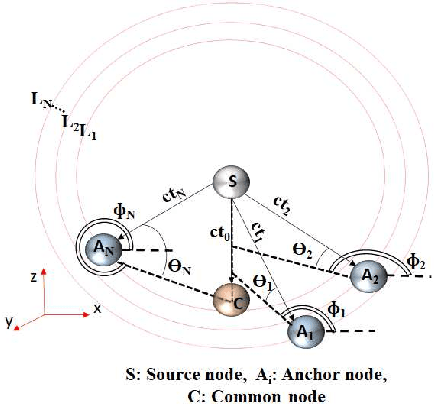
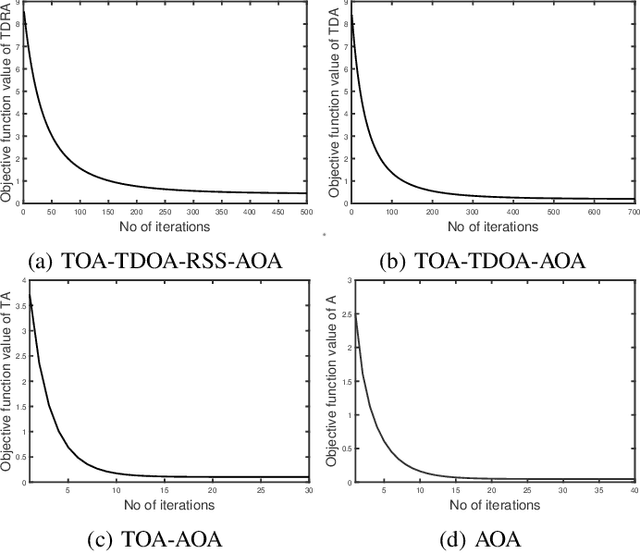
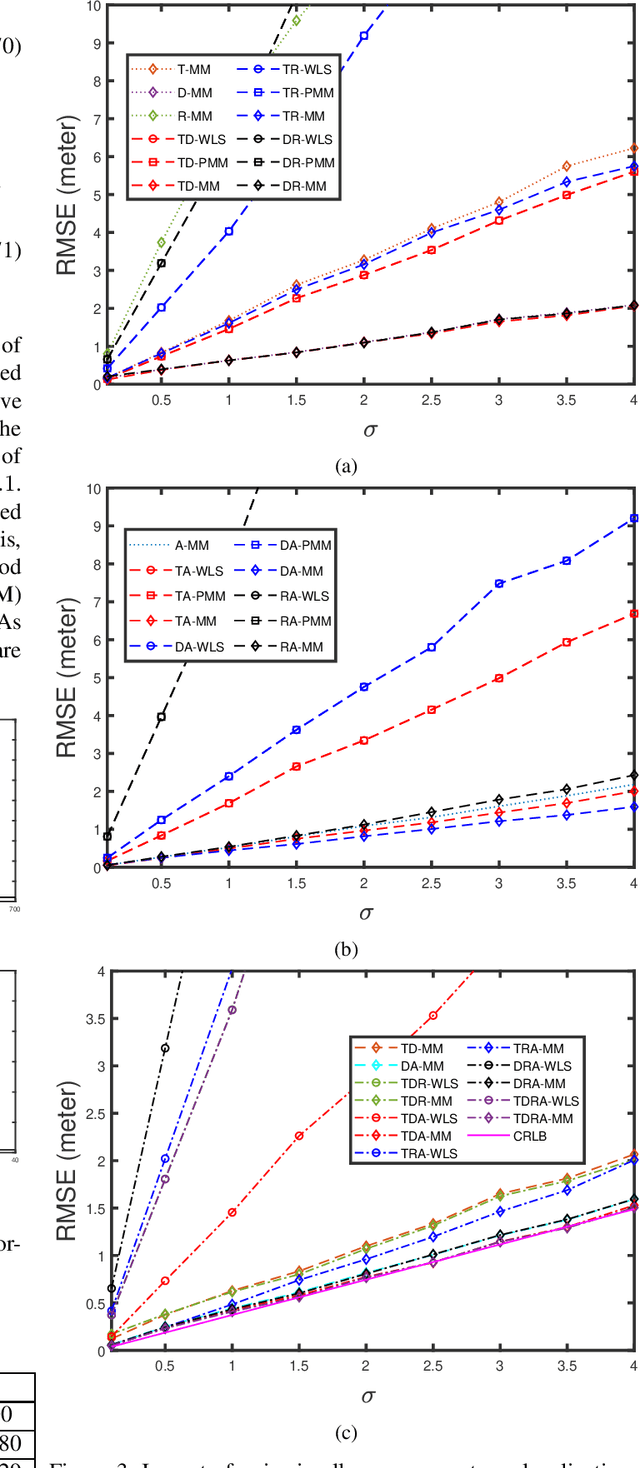
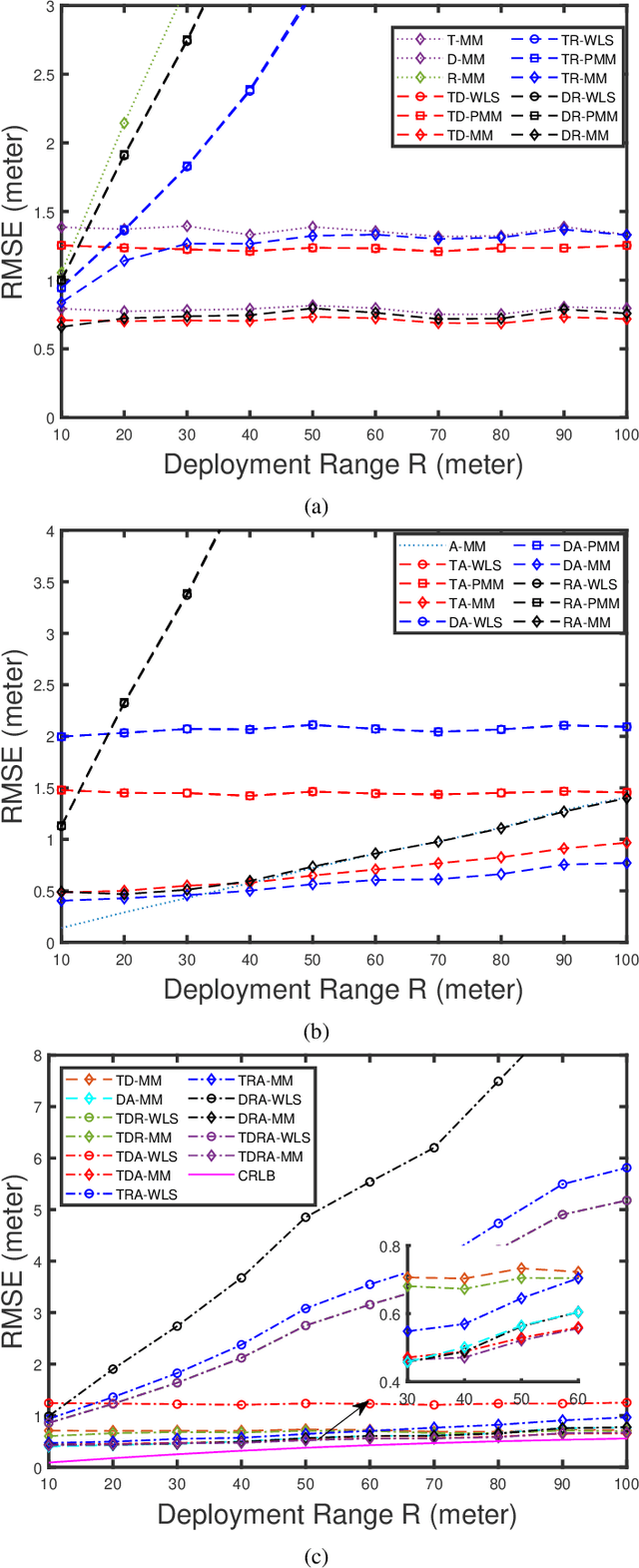
Abstract:This paper investigates the hybrid source localization problem using the four radio measurements - time of arrival (TOA), time difference of arrival (TDOA), received signal strength (RSS) and angle of arrival (AOA). First, after invoking tractable approximations in the RSS and AOA models, the maximum likelihood estimation (MLE) problem for the hybrid TOA-TDOA-RSS-AOA data model is derived. Then, in the MLE, which has the least-squares objective, weights determined using the range-based characteristics of the four heterogeneous measurements, are introduced. The resultant weighted least-squares problem obtained, which is non-smooth and non-convex, is solved using the principle of the majorization-minimization (MM), leading to an iterative algorithm that has a guaranteed convergence. The key feature of the proposed method is that it provides a unified framework where localization using any possible merger out of these four measurements can be implemented as per the requirement/application. Extensive numerical simulations are conducted to study the estimation efficiency of the proposed method. The proposed method employing all four measurements is compared against a conventionally used method and also against the proposed method employing only limited combinations of the four measurements. The results obtained indicate that the hybrid localization model improves the localization accuracy compared to the heterogeneous measurements. The integration of different measurements also yields good accuracy in the presence of non-line of sight (NLOS) errors.
Optimal Sensor Placement for Hybrid Source Localization Using Fused TOA-RSS-AOA Measurements
Apr 13, 2022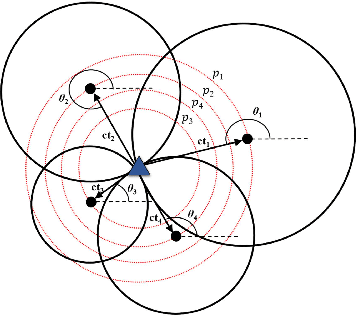
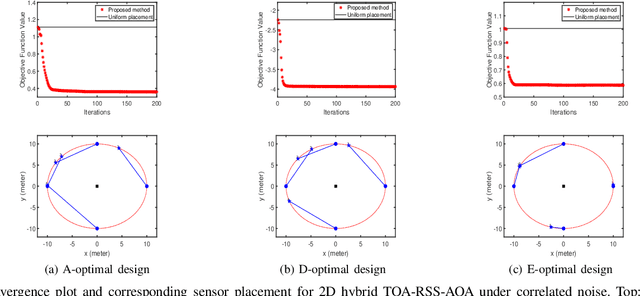
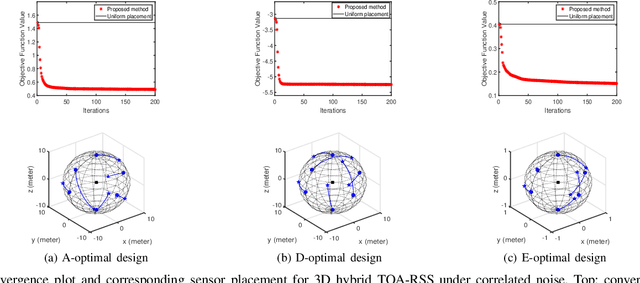
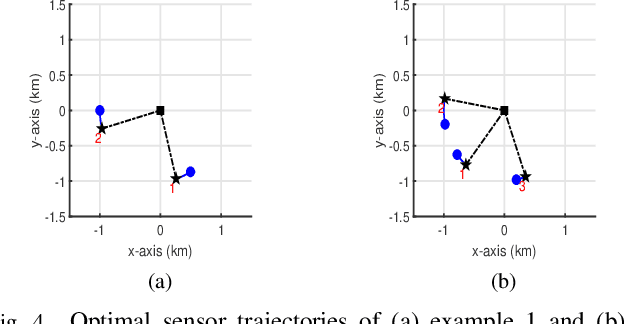
Abstract:Source localization techniques incorporating hybrid measurements improve the reliability and accuracy of the location estimate. Given a set of hybrid sensors that can collect combined time of arrival (TOA), received signal strength (RSS) and angle of arrival (AOA) measurements, the localization accuracy can be enhanced further by optimally designing the placements of the hybrid sensors. In this paper, we present an optimal sensor placement methodology, which is based on the principle of majorization-minimization (MM), for hybrid localization technique. We first derive the Cramer-Rao lower bound (CRLB) of the hybrid measurement model, and formulate the design problem using the A-optimal criterion. Next, we introduce an auxiliary variable to reformulate the design problem into an equivalent saddle-point problem, and then construct simple surrogate functions (having closed form solutions) over both primal and dual variables. The application of MM in this paper is distinct from the conventional MM (that is usually developed only over the primal variable), and we believe that the MM framework developed in this paper can be employed to solve many optimization problems. The main advantage of our method over most of the existing state-of-the-art algorithms (which are mostly analytical in nature) is its ability to work for both uncorrelated and correlated noise in the measurements. We also discuss the extension of the proposed algorithm for the optimal placement designs based on D and E optimal criteria. Finally, the performance of the proposed method is studied under different noise conditions and different design parameters.
 Add to Chrome
Add to Chrome Add to Firefox
Add to Firefox Add to Edge
Add to Edge